#decking Adelaide
Explore tagged Tumblr posts
Text
Decking Adelaide
Throughout our 30 years-experience, we’ve also mastered other areas of outdoor entertainment such as decking adelaide. A beautifully finished deck is inviting, and always in-vogue for a lasting contemporary look. We have access to great quality timbers and can design a space which corresponds to the surrounding structural elements to create a consistent theme.
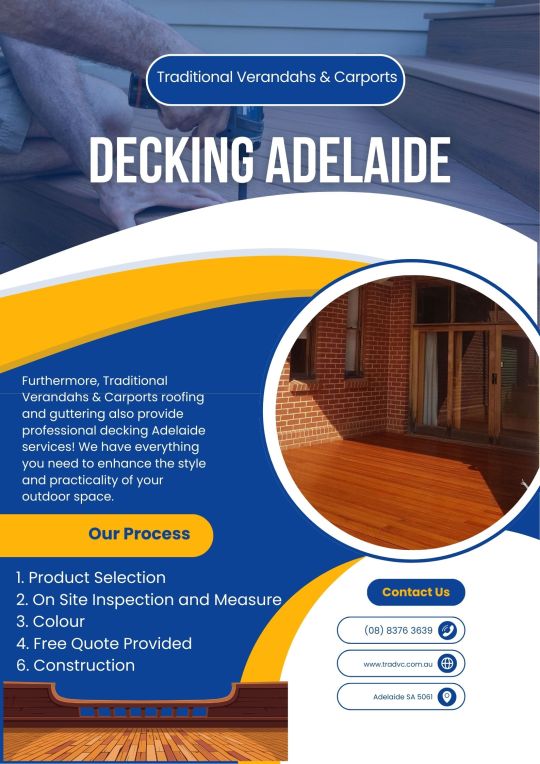
0 notes
Text
Decking Adelaide
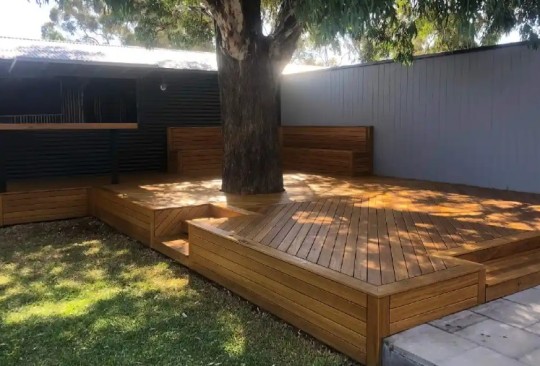
Adelaide has a perfect climate for outdoor living. As such, decking builders in Adelaide are in high demand. However, ensure you choose the right builder to get quality results. Cain Construction Group can work with you to bring your ideas to life. We will handle your decking project from scratch and push it to its full potential. Our specialty in outdoor living makes us your ideal choice for building your deck.
0 notes
Text
Why You Should Hire a Professional Decking Contractor in Adelaide

Discover why hiring a professional decking contractor in Adelaide is essential for quality, safety, and long-lasting results. Learn the benefits of expert installation for your outdoor space.
0 notes
Text
Choosing the Right Decking Material For Your Outdoor Space
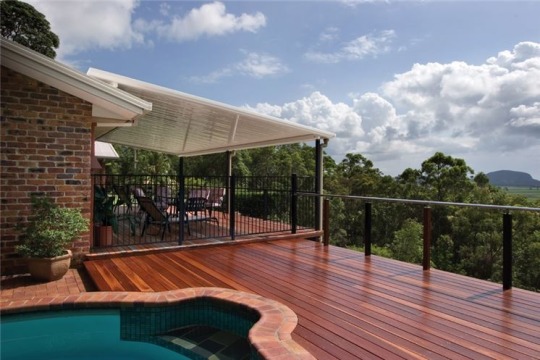
When designing an outdoor living area, selecting the right decking material ensures longevity and aesthetic appeal. The perfect deck can elevate your outdoor space, providing a functional yet visually pleasing area for relaxation and entertainment.
With various materials available, each offering unique benefits and considerations, it’s important to choose wisely. This decision becomes even more significant if you consider decking Adelaide services, where the local climate and environmental factors can influence the best material for your needs.
In this blog, we will explore some of the most popular decking options, providing insights into their advantages and potential drawbacks to help you make an informed decision for your outdoor area.
Understanding Your Needs
Before selecting a decking material, it is essential to assess the specific requirements of your outdoor space. Are you designing an area for casual family gatherings, or do you need a durable, long-lasting surface for heavy foot traffic?
The climate, exposure to sunlight, and maintenance preferences should also be considered. If you live in decking, where weather conditions vary, these factors become even more important in determining the ideal material.
Additionally, consider your long-term goals for the deck. Are you looking for a low-maintenance option or prepared to invest in regular upkeep? Understanding these needs will allow you to evaluate which material best suits your lifestyle.
Popular Decking Materials and Their Benefits
Timber Decking: A Classic Choice
Timber decking remains a traditional and highly popular option, particularly for those seeking a natural, warm aesthetic. Various wood types are available, allowing for a high degree of customisation to fit the look and feel of your outdoor space.
Advantages:
Natural beauty with customisable finishes
Suitable for a wide range of outdoor settings
Classic and timeless appeal
Disadvantages:
Requires regular maintenance (sealing, staining)
It can be prone to weathering, especially in areas with high moisture or extreme temperatures.
For those considering decking Adelaidematerials, timber offers a versatile, traditional option, though regular maintenance may be required to preserve its appearance and functionality.
Composite Decking: Low Maintenance and Durability
Composite decking has gained popularity for its low-maintenance and durable properties. Made from a blend of wood fibres and plastic, composite decking offers the aesthetic appeal of wood without the need for continuous upkeep.
It is highly resistant to weathering, mould, and mildew, making it an excellent choice for areas that experience frequent weather changes, such as decking Adelaide.
Advantages:
Minimal maintenance required (no staining or sealing)
Highly durable, resistant to fading, and resistant to pests
Eco-friendly options made from recycled materials
Disadvantages:
Higher initial cost compared to timber
Limited variety in colour and texture options
Composite decking offers a practical and long-lasting solution for homeowners in decking who desire a stylish, low-maintenance deck.
PVC Decking: Superior Durability and Modern Appeal
PVC decking is the most durable option, and it is made entirely from plastic materials. It is highly resistant to moisture, mould, and mildew, making it ideal for humid or wet conditions. Additionally, PVC decking requires little maintenance and is available in various colours and finishes.
Advantages:
Extremely durable and low-maintenance
Resistant to moisture, mould, and mildew
Sleek, modern appearance with various colour options
Disadvantages:
It can become slippery when wet
Higher upfront cost compared to timber or composite decking
For homeowners looking for a long-lasting, easy-to-maintain decking solution, PVC decking is an excellent choice, particularly in areas such as decking Adelaide, where durability is key.
Bamboo Decking: Eco-Friendly and Sustainable
Bamboo decking is a sustainable and attractive alternative to traditional materials for environmentally conscious homeowners. Bamboo grows quickly and is highly renewable, making it an eco-friendly choice. Despite its lightweight nature, bamboo decking is surprisingly durable and resistant to moisture and insects.
Advantages:
Sustainable and renewable
Resistant to moisture and pests
Unique, contemporary aesthetic
Disadvantages:
It can be more expensive than traditional timber
It requires some maintenance to retain its appearance
Bamboo decking offers a distinctive look and environmental benefits, making it a suitable option for those in decking who prioritise sustainability.
Budget Considerations
Your budget plays a significant role in the selection of decking material. Timber generally offers the most affordable initial cost but requires ongoing maintenance to protect its appearance and longevity. Composite and PVC decking materials come at a higher upfront cost but are more cost-effective in the long run due to minimal maintenance requirements.
If you’re seeking a low-maintenance deck, it may be worth investing in a more durable material, such as composite or PVC, for long-term savings.
Conclusion
Choosing the right decking material for your outdoor space is a decision that requires careful consideration of your lifestyle, budget, and the climate in which you live. Whether you opt for the natural warmth of timber, the low-maintenance benefits of composite, or the durability of PVC, decking solutions are available to suit every need.
Considering decking Adelaide services, consider the local climate and environmental factors. With the right choice, your outdoor deck can become a beautiful, functional extension of your home for years to come.
0 notes
Text
Enhance Your Outdoor Living With Stunning Decking: A Complete Guide
Whether you have a spacious backyard, a cozy patio, or a rooftop terrace, decking can elevate your outdoor living experience. In this comprehensive guide, we will delve into the world of Decking Adelaide, exploring its benefits, types, and maintenance tips. Get ready to create your own outdoor oasis that will impress and delight you. Let's dive in!
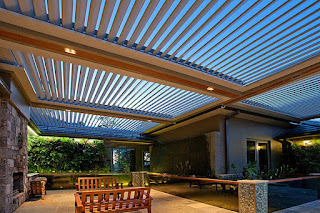
Why Choose Decking?
Decking offers a multitude of advantages for your outdoor living space. Here are some compelling reasons to consider decking for your home:
Enhanced Aesthetics: Decking adds visual appeal and character to your outdoor area. It can instantly transform a plain space into a stylish and inviting retreat.
Increased Living Space: A well-designed deck extends your living space outdoors, providing a dedicated area for relaxation, dining, and socializing.
Versatility: Decking can be customized to suit your preferences and the layout of your outdoor space. It offers flexibility in terms of size, shape, and design possibilities.
Value Addition: Decking can increase the value of your property. It is a sought-after feature that appeals to potential buyers, making it a wise investment.
Now that we understand the benefits of decking, let's explore the different types available.
Types of Decking
There is a wide range of decking materials to choose from, each with its unique characteristics. Consider the following options:
Wood Decking
Natural Appeal: Wood decking exudes a warm and natural aesthetic, blending seamlessly with outdoor surroundings.
Variety of Options: From classic hardwoods like cedar and redwood to more affordable options like pine and fir, wood decking offers a range of choices.
Maintenance: Wood decking requires regular maintenance, including staining or sealing, to protect it from weathering and prolong its lifespan.
Composite Decking
Durability: Composite decking is made from a blend of recycled materials and synthetic fibers, offering excellent durability and resistance to rot, pests, and fading.
Low Maintenance: Unlike wood, composite decking requires minimal maintenance. It doesn't need staining, sealing, or regular sanding.
Wide Range of Colors and Textures: Composite decking comes in a variety of colors, textures, and finishes, allowing you to find the perfect match for your outdoor style.
PVC Decking
Extreme Durability: PVC decking is highly resistant to moisture, stains, scratches, and fading. It is an excellent choice for areas with high humidity or exposure to the elements.
Low Maintenance: Similar to composite decking, PVC decking requires minimal upkeep, making it a hassle-free option.
Heat Resistance: PVC decking has excellent heat resistance, making it comfortable to walk on barefoot even on hot summer days.
Choose the decking material that best suits your preferences, budget, and maintenance requirements. Once you've selected the type of decking, it's time to design and build your dream outdoor space.
Designing and Building Your Deck
Designing and building a deck requires careful planning and consideration. Here are some essential steps to guide you:
Assess Your Space
Evaluate the available space and consider its size, shape, and any existing features that must be accommodated.
Determine the desired function of your deck, whether it's for lounging, dining, or hosting gatherings.
Deck Layout and Features
Plan the layout of your deck, including its shape, levels, and any additional features such as stairs, railings, or built-in seating.
Consider the orientation of the deck to maximize sunlight, shade, and privacy.
Permits and Building Codes
Check with your local authorities to determine if any permits or approvals are required for building a deck in your area.
Familiarize yourself with the building codes and regulations to ensure compliance during the construction process.
Hiring Professionals or DIY
Decide whether to hire professionals or embark on a DIY project based on your skill level, time availability, and complexity of the deck design.
If hiring professionals, research and select reputable contractors with experience in deck construction.
With the planning and design in place, it's time to bring your deck to life! Whether you're building it yourself or working with professionals, enjoy the process and envision the joy and relaxation your new deck will bring.
Deck Maintenance Tips
Regular maintenance is essential to keep your deck looking its best and prolong its lifespan. Consider these tips:
Cleaning: Regularly sweep or use a leaf blower to remove debris. Periodically wash the deck with mild soap and water to remove dirt and stains.
Staining or Sealing: Depending on the material, apply a suitable stain or sealant to protect the deck from UV rays, moisture, and wear.
Inspecting and Repairing: Check for any signs of damage, including loose boards, nails, or rot. Address any issues promptly to prevent further deterioration.
Furniture and Plant Protection: Use furniture pads or rugs to protect the deck surface from scratches. Use planters with saucers to prevent water damage.
By following these maintenance tips, you can ensure your deck remains beautiful and functional for years to come.
Decking Adelaide offers endless possibilities to enhance your outdoor living space. From cozy wooden decks to modern composite or PVC options, the choice is yours. So, don't wait any longer—embrace the beauty and functionality of decking and create your own outdoor haven today!
Source:https://deckingadelaideguide.blogspot.com/2023/07/enhance-your-outdoor-living-with.html
0 notes
Text
Spotted Gum Decking, Adelaide | Premium Timber Decking Experts
It makes it ideal for a wide variety of not only interior but also exterior applications. Spotted Gum is also an excellent choice for cladding, decking, lining, battens, and joinery. Spotted Gum Decking Adelaide

#Spotted Gum Decking Adelaide#Ivl Timber Adelaide#Structural Timber Adelaide#Decking Timber Adelaide#Timber Battens Adelaide#Plywood Sheets Adelaide#Timber Decking Adelaide#Battens Adelaide#Timber Merchant Supplies Queensland#Cypress Posts Queensland#Hume external doors Adelaide#Barn doors Adelaide#Hume strata doors Adelaide
0 notes
Text
Embracing stylish and exciting homes
Fleurieu based, Kleinig Constructions is passionate, versatile and prides itself on customer satisfaction our expert team of Custom Home Builders is what you’re looking for.
Our expertise lies in luxury, custom homes, renovations and carpentry. With over 15 years experience in the construction industry, we are confident in our attention to detail and commitment to clients post-handover. Visit our website here: https://kleinigconstructions.com.au/
#construction#carpentry#home design#home improvement#home renovations#interior#exterior#decks#pergolas#timber#ceiling#australia#adelaide#victor harbor
1 note
·
View note
Text
In Adelaide, it's crucial to select the right composite decking material to resist extreme heat and UV rays. It's then your outdoor spaces will be assured of durability and elegance.
0 notes
Text

Furthermore, Traditional Verandahs & Carports roofing and guttering also provide professional decking Adelaide services! We have everything you need to enhance the style and practicality of your outdoor space.
0 notes
Text
Decking Adelaide
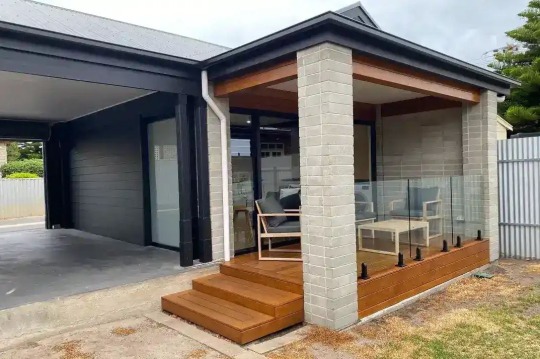
Looking for professional decking services in Adelaide? Cain Construction specializes in high-quality decking solutions that enhance the beauty and functionality of your outdoor spaces. Whether you're interested in timber decking, composite decking, or a custom design, our team provides expert installation and craftsmanship. We use premium materials that are built to last, ensuring your deck withstands the test of time and the harsh Adelaide climate. Our decking options are low-maintenance, eco-friendly, and available in a range of styles and finishes to suit your home’s aesthetic. At Cain Construction, we work closely with our clients to create personalized outdoor spaces that complement their lifestyle. With years of experience in decking Adelaide homes, we pride ourselves on delivering superior results with attention to detail and exceptional customer service. For durable, beautiful, and expertly installed decking in Adelaide, contact Cain Construction today for a free consultation!
1 note
·
View note
Text
0 notes
Text
0 notes
Text
Create Your Dream Outdoor Space with Pine Decking in Adelaide!
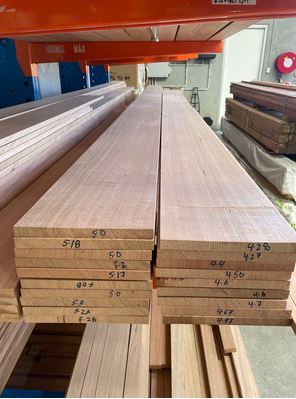
Pine Decking is a low-cost option for decks or screens. Smooth top with rounded edges and a ribbed under side to allow airflow between joist and deck. Treated Pine Decking is a clean finish product that is durable and treated for Australian conditions. Pine Decking Adelaide
0 notes
Text


Cartomancy is the art of predicting the future through a simple and common deck of cards - unlike tarot which has 78 cards, a deck of suits has 52. And we're going to talk about it! ^^
Historical context
The origin of cartomancy according to Eastern tradition:
One of the oldest documentary references regarding the origin of cartomancy is in one of the countries richest in mysticism and culture in the East, China.
An ancient Chinese book cites in one of its passages, dated in the year 1678, a story in which an officer in the army of Emperor Huei-Song told him about a kind of fortune-telling and prediction game that he had invented. This game consisted of thirty-two ivory tablets, with markings that related to various themes of life, such as Heaven, Earth, the existence of man and his own fortune.
Other events related to the origin of cartomancy were found in China, such as the emergence of rustic copper and silver plates that had engravings of drawings and numbers corresponding to our current suits. These rustic plates would later have been reproduced on paper, giving rise to the oldest known deck of cards.
The origin of cartomancy according to Western tradition
In the West, the most accepted hypothesis regarding the origin of cartomancy is that it emerged in ancient Egypt, in the pages of the mythical Book of Thoth.
Legend has it that the Book of Thoth contained sacred doctrines for the Egyptians, pure and comprehensive teachings for all aspects of life and daily life. According to scholars, this book contained answers to all of humanity's problems and was created by the priests after they consulted in person with the god of magic himself, Thoth.
Moses, who was initiated and versed in the ancient occult wisdom of the Egyptians, is said to have taken the Book of Thoth with him when he led the Jewish people on their escape to the Promised Land and crossed the Red Sea. Some time later, the book is said to have given rise to a text called Tarot, in which the secrets of the wheel of time and the wheel of fortune were found.
It is because of these signs that many Western researchers believe that the origin of cartomancy occurred in ancient Egypt.
The origin of cartomancy according to European tradition
In Europe, the greatest reference related to the origin of cartomancy goes by the name of Marie Anne Adelaide Lenormand, or simply Madame Lenormand, a famous French esotericist born in 1772 and who had among her clients well-known figures, such as the executioner Robespierre and the emperor Napoleon Bonaparte.
Madame Lenormand created two powerful cartomancy decks, which became known as the Petit Lenormand, considered one of the best divinatory systems in existence, with thirty-six cards that detail people's lives in all their aspects, and the Great Lenormand, similar in virtues, but a little more complex and difficult to interpret.
The mystical romani people, from the moment they became aware of the power of this deck and the wisdom it carried, began to use it frequently, and being a traveling people, they spread it throughout Europe and then the world.
The truth is that the entire West, Africa and Asia Minor became aware of the art of cartomancy, which spread throughout countries regardless of their geography and civilization.
Naturally, each people evokes their gods, their spirituality and their divinities in their reading. Over the centuries, all peoples have turned to some entity to find out what awaited them the next day and how to solve the problems that arose at each stage of life.
We are not always able to maintain self-control over our feelings and desires and, sometimes, when a phase of greater restlessness is reached, human beings turn to something or someone they believe knows more. And in this way, we immediately enter the mystical world.
Cards are grouped together to form decks, presented with various figures, suits and colors, according to the times in which they were made, and appeared in fine wood, plants, and even paper, better known as sheets. Nowadays, cards appear in a more colorful form, even more creative and using the beauty that each human being attributes to them when inspired.
Today, the design of many decks is extremely rich, contributing to an easier reading due to the clear and detailed image and also due to the use of bright colors, which give greater joy and beauty to the act of laying out / reading cards.
The deck consists of 52 cards, 40 of which are numbered and 12 more cards are distributed across four suits: Hearts, Diamonds, Clubs and Spades. Each suit includes the King, Queen and Jack.
These numbers allow for symbolic associations of the most varied types. The 52 cards are related to the 52 weeks of the year, and the four suits are linked to the four seasons: Wands/spring, Cups/summer, Pentacles/autumn, Swords/winter.
The suits represent the four elements of nature and the signs of the zodiac are related as follows:
Wands are linked to the Earth element and have the signs Taurus, Virgo and Capricorn.
Cups are linked to the Fire element and have the signs Aries, Leo and Sagittarius.
Pentacles are linked to the Water element, with signs such as Cancer, Scorpio and Pisces.
Swords are linked to the Air element and have the signs Gemini, Libra and Aquarius.
HOW TO TAKE CARE OF YOUR DECK
If you have a deck or if you want to get one, be it a standard deck or a tarot deck, you might know this already. But it's always good to review things over.
As you work with the deck, you will create an energy in action, you will be in sync, and reading will become easier as you study and use it.
You should not let anyone handle your deck of cards or let it be used for fun games.
The deck of cards, when energized and/or consecrated, becomes an instrument of divination and, as such, must be treated with all the love and care. From that day on, the deck becomes your best friend because, remember, it will be the one that helps you.
Cards can be cleared of negative energy whenever you feel there is a blockage. There are numerous ways to clear cards and I will list some of them below.
To help with this energetic cleansing, you can stack the deck on top of a glass with water and salt and leave it there for a few hours, three at most. You can also smoke the cards with rosemary incense or another cleansing incense. Some people take the deck to the beach and place them on the sand, with the aim of discharging the accumulated negativity and being energized with the energy of the sea.
You can choose to use cleansing crystals such as selenite, black tourmaline or amethyst. Or meditate with the cards until you feel that they have their energy again.
When you have finished cleaning or consulting the cards, they should always be stored in a wooden box or velvet bag in the color you like best. However, this is not mandatory and, if you prefer, you can store them wherever you like.
Some people like to draw cards for themselves and others; it is usually not recommended that you let anyone touch your cards so that the energies do not mix, but some people don't mind this rule. Experiment and see what works best for you.
CONSECRATION OF THE DECK
Before consecrating the object, it is important to perform an energetic cleansing to eliminate the energies of other people who have held it or of places where it has been exposed. To do this, the object can be passed through the smoke of incense or placed near a fire, dripped with water, or placed on coarse salt for a few minutes.
The entire process should be done while visualizing the energetic cleansing of the object. It is possible to do one or all of these options, it will just depend on the type of object chosen, since many of them cannot be wet or brought near fire.
Once you have cleared the energies of your object, it is time to consecrate it. There are several ways to consecrate an object, and I will teach you four of them.
The first consecration is using only personal powers and intentions. The greatest tool of a practitioner of magic is the mind itself, because with it one can change the energy of something and make it have the desired energy.
To do this, you need to hold the object you want to consecrate in your hands, breathe deeply, relax and try not to think about anything around you, focusing only on yourself and the object. Then, you should start thinking about the energy you want, such as luck, protection, harmony, self-love, etc. Once this energy is clear in your mind, you should imagine it being transferred to the object through your hands.
The second way to consecrate an object is by using one of the four main magical elements. This consecration is ideal when an object requires the energy of only one element. For example, consecrating a wand with the element of fire and using it to transmute energies, or consecrating a ring with the element of water to maintain its emotional balance while wearing it.
To consecrate an object with one of the elements, it is necessary to have something on hand that represents the element.
The object must be brought close to the element you wish to consecrate, which will be represented. The person consecrating it must visualize the desired energy. When the person feels that the object is impregnated with the energy of the element, the object will then be consecrated.
The third consecration is using the four main elements. This method of consecrating can be used for any object that you want to have positive energy in, no matter its purpose.
To consecrate it, there must be objects that represent the four elements on a table or on the altar.
As the object is brought close to the elements, the corresponding energy of each element should be visualized. For example, when passing the object through incense smoke, the object should be visualized as concentration; when splashing water on it, the object should be visualized as emotional balance; when bringing it close to a candle flame, the object should be visualized as courage; and finally, when placing it on a crystal, the object should be visualized as prosperity. You can visualize whatever you prefer, as long as you establish a connection with the energy of the elements.
Finally, the fourth way to consecrate an object is using the energy of the Sun and the Moon, done by leaving the object under the sun's or moon's rays, there are those who leave the object under only the sun or only the moon, or both.
Know your deck of cards
We have already talked about how important it is to take care of the cards, due to the energetic influences they receive, but it is also important that you talk to it, introduce yourself, makie it some questions and shuffle it so a card can jump and answer you.
When you buy a new deck, cut it as many times as necessary until you feel familiar with the cards, and then shuffle it a few more times. The more you handle the deck, the more it will be impregnated with your energy and, therefore, you will be able to get to know it better.
It is also important to spread the cards out in front of you and look at them, waiting for them to “say” what they have to say about themselves. The reader will discover that this exercise will really make the cards “speak” to him, and this is the most important thing for the tarot reader who wants to learn to associate his intuition with technical and practical knowledge.
HOW TO CHOOSE A METHOD?
The choice can be made between the various forms practiced in the world. There are several methods for using traditional deck cards. It is up to the apprentice to decide which method he likes the most and with which he feels most comfortable to perform a reading.
Among some advice I want to leave, I would like you to pay attention to the following items:
• There is no rule.
• Don't be blocked by a first reading you may do. You're learning!
• Cartomancy is a free study and, therefore, it is very likely that you will find cards that may have one meaning for you and that may have another for anyone else.
• Be free in your reading and feel the messages you will receive when making the interpretation.
MEANINGS
It is important that we learn to identify the meanings of each of the cards, starting by knowing everything they comprise: deck structure, suits, numbers.
In terms of structure, our deck is made up of 52 cards divided into four suits (Hearts, Clubs, Diamonds and Spades), 10 numbered cards (from 1 to 10) and three court figures for each suit (King, Queen or Queen, and Jack).
THE SUITS
The suit allows us to examine the daily and personal aspects of our emotional, professional, financial and health lives.
The suits are directly linked to the elements (Fire, Water, Earth and Air) and the seasons (spring, summer, autumn and winter). Therefore, the arrangement of the suits in the deck is as follows:
Suit = Season = Element
Wands = Spring = Fire
Cups = Summer = Water
Pentacles = Autumn = Earth
Swords = Winter = Air
General meanings:
HEARTS
Spring, fire element, youth, love, emotions, passion
SWORDS
Winter, earth element, old age, health, work, transformation
COINS (or GOLD)
Autumn, water element, responsibility, security, money
CLUBS (or WANDS)
Summer, air element, curiosity, intuition, knowledge
JACK problem
KING & QUEEN = you or someone in your life
ACE = home & family
6 7 8 ROAD ENCOUNTER NEWNESS
9 10 LOVE DESIRE

#standart deck#oracle#cartomancy#witchblr#paganism#witchcraft#witchy things#witchcore#baby witch#for baby witches#baby witches#oracle deck
23 notes
·
View notes
Text
Lenormand cards: a brief history
Lenormand cards are named after Marie Anne Adelaide Lenormand (1772–1843), a French bookseller, necromancer, fortune-teller, and cartomancer of considerable fame during the Napoleonic era. She was a highly influential figure of French cartomancy that began in the late 18th century. Her career spanned more than 40 years. After her death, her name was used on several cartomancy decks, including a deck of 36 illustrated cards known as the Petit Lenormand.
Once a parlour game like tarot cards, Lenormand cards are modelled on a card deck published circa 1799 called "Das Spiel der Hoffnung" ("The Game of Hope"), a game of chance designed by German parlour game designer Johann Kaspar Hechtel of Nuremberg, originally meant to be laid out in a 6 x 6 card grid and played as a boardgame, with #1 (The Rider) as the start and #35 (The Anchor/Hope) as the end. The cards had German and/or French style playing cards depicted on them so they could double as a standard German 36-card deck.
Madame Lenormand was rumored to have used a custom set of cards that was her own adaptation. It is believed that after she died, a deck of cards made after the one she personally used was named after her, kickstarting a trend that was to become immensely popular in occult circles of continental Europe.
#lenormand#lenormand cards#lenormand deck#lenormand reading#witchblr#divination#cartomancy#fortune telling#card reading
20 notes
·
View notes
Text
Eris' STP AUs!
"Chapter I: Princess and The Dragon" -- A Role Swap, with a twist within itself! For the Echo has been stopped far too many times in trying to get rid of Death Herself, He has resorted to a new method: To try and manipulate The Shifting Mound's resets to His own favour, swapping the decks. "Hearts and Glass" -- What happens after you open the door with The Stranger during The End of Everything? What happens when the Echo pushed His threads too far, opening a link between The Construct and The Other Worlds? Feathers become Flesh.
The Long Quiet - The Shifting Mound. Hero - Princess. Cheated - Razor. Smitten - Damsel. Skeptic - Prisoner. Stubborn - Adversary. Hunted - Den and Beast, they show up as a duo. Paranoid - Nightmare. Opportunist - Witch. Cold - Spectre. Broken - Tower. Contrarian - Stranger.
Voice of The Hero - Hero Blade. Voice of The Paranoid - Percival Vela. Voice of The Cold - Cole Frost. Voice of The Broken - Bruce Glass. Voice of The Smitten - Simon Kiss. Voice of The Stubborn - Samuel Victor. Voice of The Skeptic - Silas Irsay. Voice of The Hunted - Hunter Wilder. Voice of The Opportunist - Otto Luck. Voice of The Cheated - Chris Trick. Voice of The Contrarian - Cameron Scale. + The Long Quiet - Liam Quinn.
The Princess - Princess Chain. The Nightmare - Natalia Mavros. The Spectre - Sasha Ghastly. The Tower - Talia Grant. The Damsel - Dahlia Hart. The Adversary - Adelaide Ashford. The Den - Dani Locke. The Beast - Beatrice Waitman. The Witch - Wynn Potion. The Thorn - Taylor Thorne. The Razor - Rachel Sharp. The Stranger - Sadie Walsh. + The Shifting Mound - Scarlett Moris.
13 notes
·
View notes